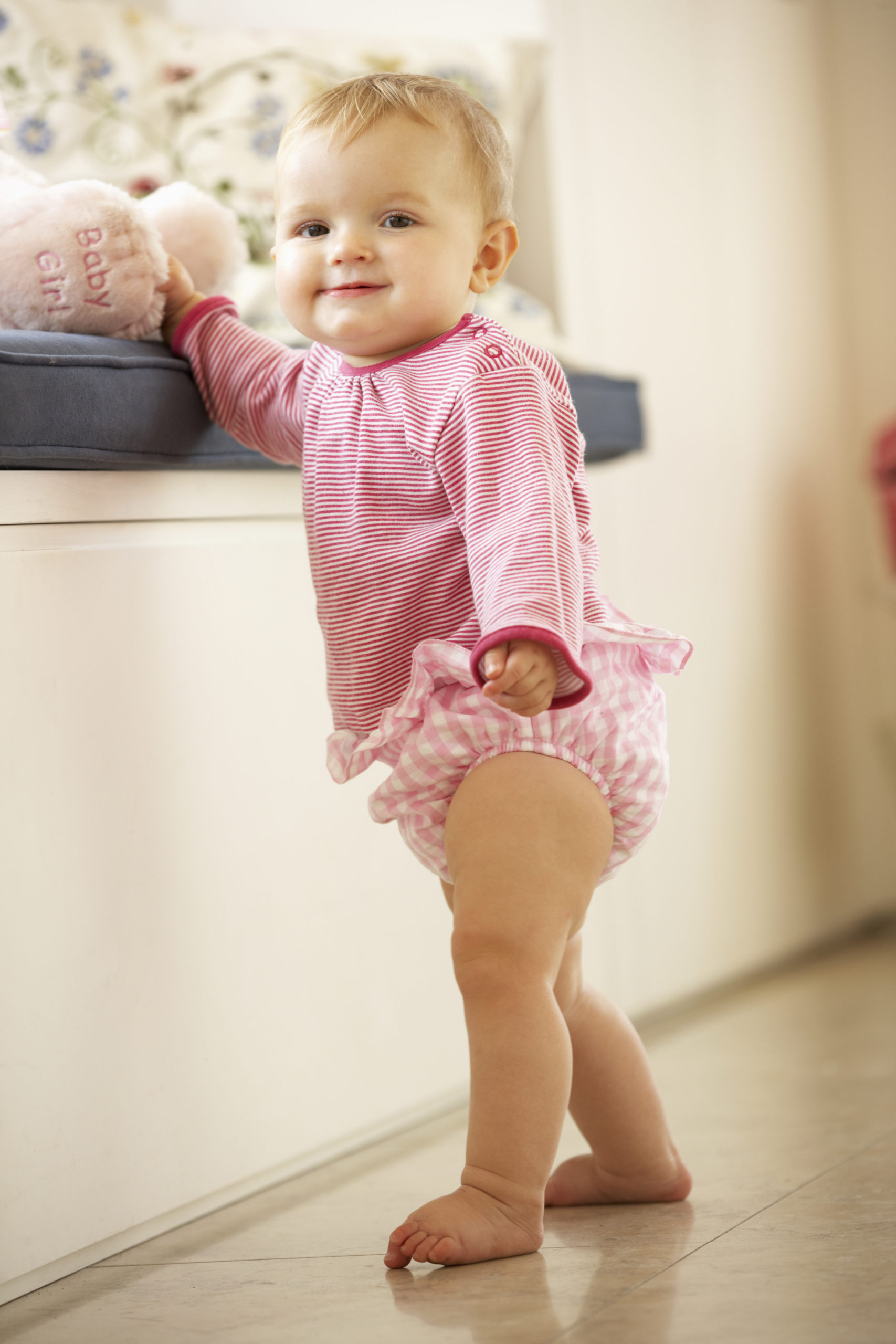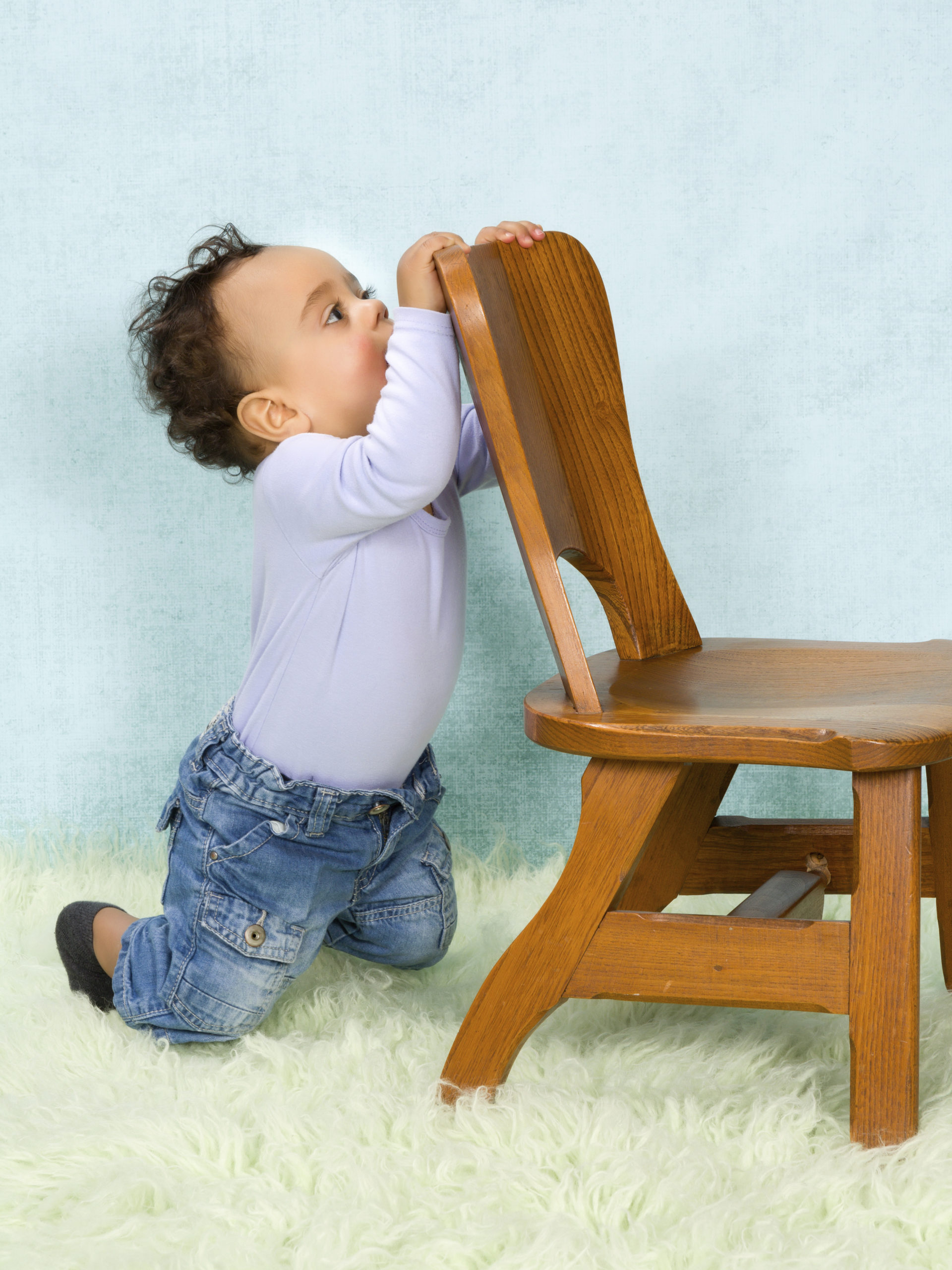Gross Motor Milestone Series: Standing
 Standing is a general term for a skill that encompasses many gross motor milestones. Today we will look at lower extremity weight bearing, standing at a support surface, pull to stand, and lower from stand. Standing activities demonstrate leg and trunk stability, which are necessary for and indicative of a child’s readiness to walk.
Standing is a general term for a skill that encompasses many gross motor milestones. Today we will look at lower extremity weight bearing, standing at a support surface, pull to stand, and lower from stand. Standing activities demonstrate leg and trunk stability, which are necessary for and indicative of a child’s readiness to walk.
Free Time Without Obstacles
In order to move, your baby has to have the freedom to move. This means daily time spent on the floor outside of car seats, strollers, swings, standers, etc.
Bearing Weight
Weight bearing activities can be started when your baby is able to control his or her head without difficulty, usually between 2 and 3 months of age. He or she should stand with support for 3-5 seconds without the knees or hips collapsing.
- Hold your child against your chest with their feet on your lap. Gently bounce up and down.
- Support your child around their trunk with feet flat on the ground. Practice on different textures such as carpet, tile, grass, sand, etc.
- Encourage splashing, kicking, and pushing against things with the feet.
Standing at a Support Surface
In order to stand at a table, your baby should be able to bear weight on their legs and feet without collapsing.
- Stand your child at a low table, couch, or activity center while supporting them around the trunk.
- Slowly decrease the amount of help you provide until they can stand while holding on without your help.
- Gradually increase the amount, size, and weight of the toys they play with while standing.
 Pull to Stand
Pull to Stand
Make sure your baby can bear weight, get onto hands and knees without help, and stand at a support surface without your help.
- Practice having your child reach up to a low support surface (stool or the couch with a cushion removed) from a hands and knees position and get into kneeling.
- Practice having your child reach up to a support surface from sitting and get into a kneeling position. Pull gently on the arms, if needed, to help your child understand what you want them to do.
- Have your child sit on your lap and pull up to stand at a support surface using their arms and hands.
- From a kneeling position, bring one leg up with the knee bent and the foot flat on the ground. Assist as much as needed with pushing up to a standing position.
- Practice the entire movement from sitting and from hands and knees into standing using a higher support surface.
- Use your child’s favorite toys, bottle, or other motivating object to encourage standing. Place items just out of reach, but far/high enough that your child can’t grab them by reaching from a kneeling position.
Lower From Standing
Your child also needs to be able to get down from a standing position.
- Hold your child at the trunk and assist them down to sit.
- Place a toy on the floor and then hold their hand and help them sit on the floor.
- Use words like “sit” and “sit down and play.”
- Have your child lower to the floor from standing. You can place a pillow or cushion on the floor to reduce the distance and soften the landing.
If your baby isn’t standing, they might benefit from a physical therapy evaluation. Contact MOSAIC Health & Rehab to schedule a free screen or to set up an evaluation. Check out Gross Motor Milestones: Walking to learn what your child should develop next. To learn more, check out this great milestone moments list from the CDC.
